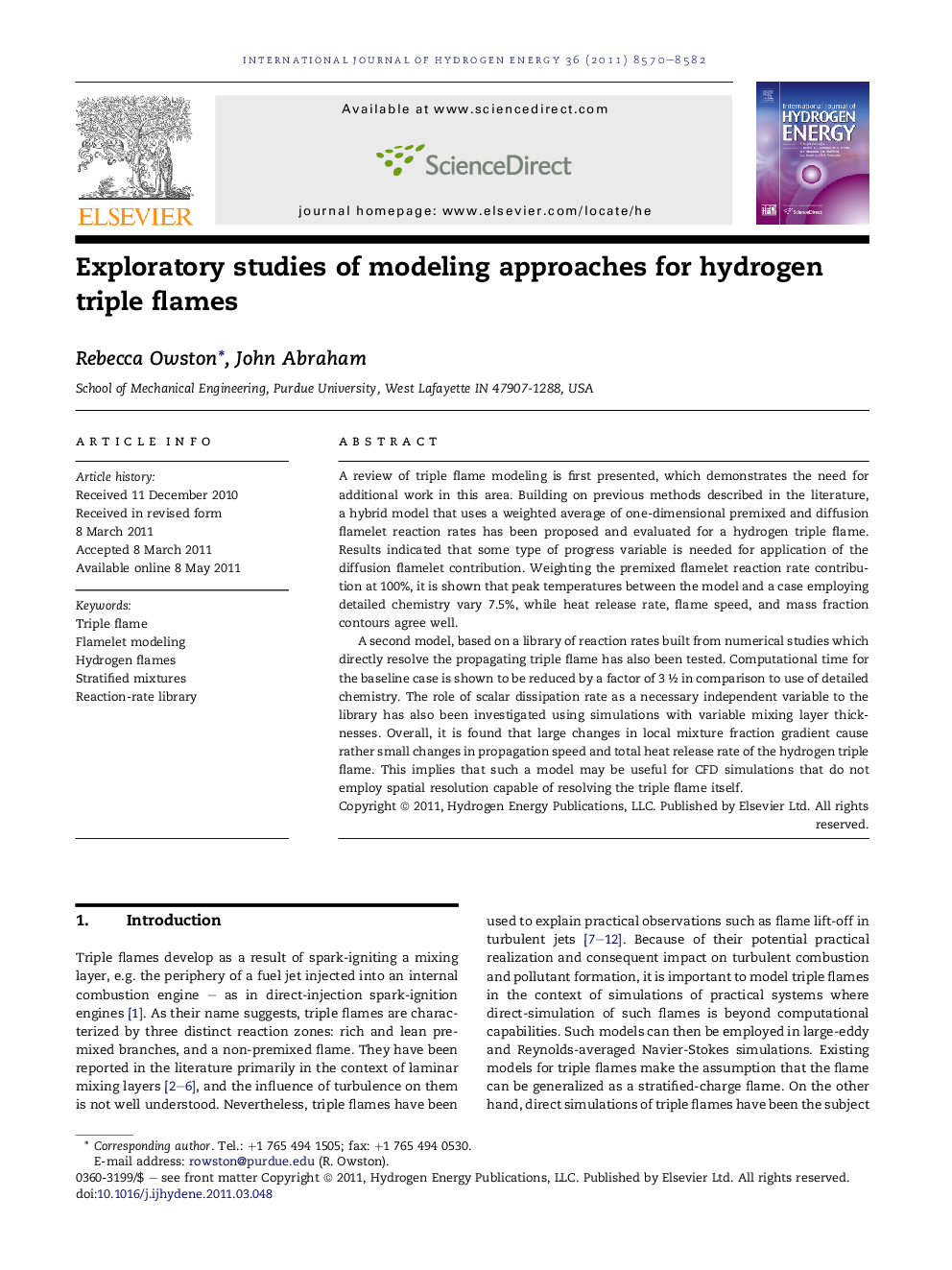| Article ID | Journal | Published Year | Pages | File Type |
|---|---|---|---|---|
| 1279175 | International Journal of Hydrogen Energy | 2011 | 13 Pages |
Abstract
A second model, based on a library of reaction rates built from numerical studies which directly resolve the propagating triple flame has also been tested. Computational time for the baseline case is shown to be reduced by a factor of 3 ½ in comparison to use of detailed chemistry. The role of scalar dissipation rate as a necessary independent variable to the library has also been investigated using simulations with variable mixing layer thicknesses. Overall, it is found that large changes in local mixture fraction gradient cause rather small changes in propagation speed and total heat release rate of the hydrogen triple flame. This implies that such a model may be useful for CFD simulations that do not employ spatial resolution capable of resolving the triple flame itself.
Related Topics
Physical Sciences and Engineering
Chemistry
Electrochemistry
Authors
Rebecca Owston, John Abraham,
